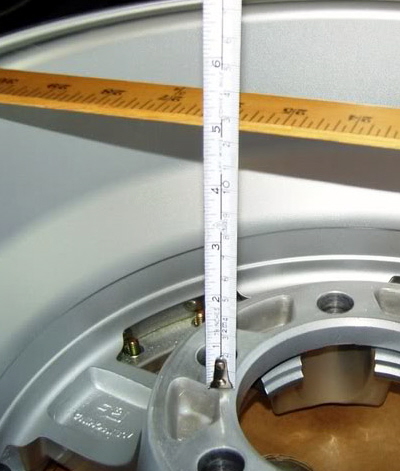Ask the Editors: Understanding ATV Wheel Offset

Nobody told me I had to be an expert in math.
Be Not Afraid
Here’s the good news- that little mathematical formula appears a lot more confusing than it really is. That’s a measurement of wheel offset. The first number tells you the distance from the hub to the inside lip of the rim and the second one from the hub to the outside lip.
So 5+2 will measure 5″ from the inside lip to the center of the rim where the hub and rim meet, and then it will measure 2″ from the hub to the outside lip. That adds up to 7″ in case you didn’t notice, and if you remember, your wheel is 12″ (diameter) x 7″ (width). That 5+2 is simply telling you that 7 breaks down to 5 inches from rim edge to center and 2 inches from center to outside.

The reason this became a factor to consider for ATVs is that a lot of individuals want to run overly wide tires for purposes like mudding but by ignoring the stock wheel offset, you could end up mounting tires that rub on the machine’s suspension or brakes.
The other reason it can be a factor is that some rims have really wide lips. To the point of say half an inch or more bigger than the indicated tire width. We recently saw an example of a wheel that was 12 x 7 5+3. That adds up to 8″ in width you may notice. In this case it’s 7 inch “mounting width” even though the rim itself has a half inch lip. They account for this extra width by giving you a larger offset number (5+3).
Positive & Negative
A positive offset wheel has more rim behind the hub and less rim out in front of the hub.
A positive offset will have a larger number first and and smaller number second. 5+2, 5+3 etc.
A negative offset wheel has less rim behind the hub of your and more rim out in front of the hub.
A negative offset will have a smaller number first and a larger number second. For example. 2+5, 3+4 etc.
Typically you’ll find negative offsets in “deep dish” or lifted wheels.
Conclusion
To answer your original question with the example you provided- so long as you’re looking to maintain the OEM tire sizes, most any standard replacement 12×7 wheel would work just fine. If the rim you’re considering is extra deep dish, designed for a terrain specific condition (say sand or mud for example) or claims to change your vehicle’s stance, height or handling, that’s when you’re going to want to stick to as close to stock offset as possible.

To measure the offset of your OEM wheels, simply grab a tape measure, a straightedge and a pen. Flip your (tireless) wheel face down on a flat surface. Lay your straightedge across the top and measure from the hub (mounting plate) up to your straightedge (but remember, you’re only going to the lip here so it’ll be a bit less than the measurement to the straightedge). Write that number down.
Once you have that, you automatically know the number for the opposite side as well since we know the two must add up to 7″ of width. Piece of cake.

